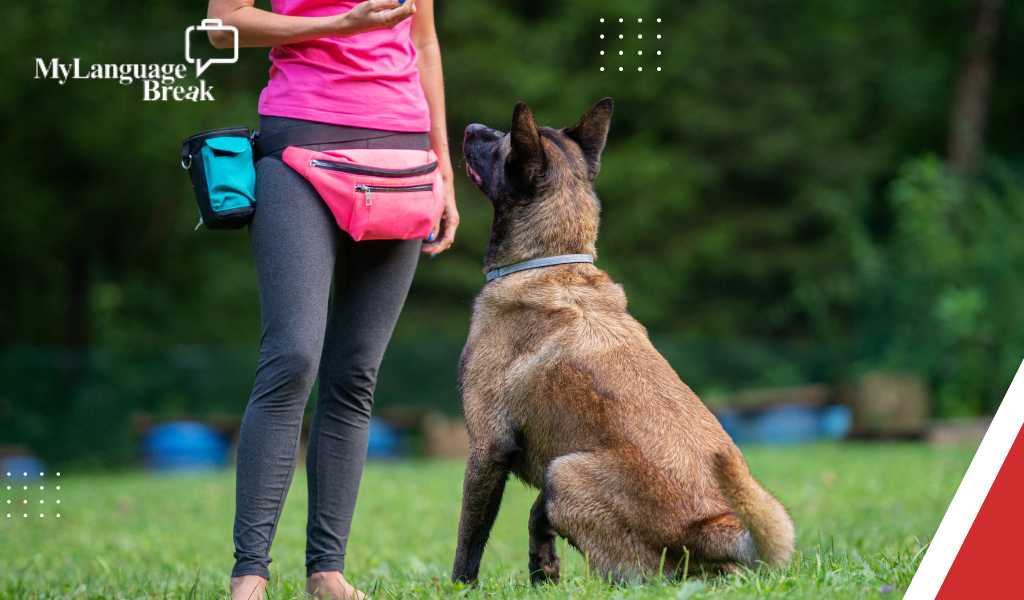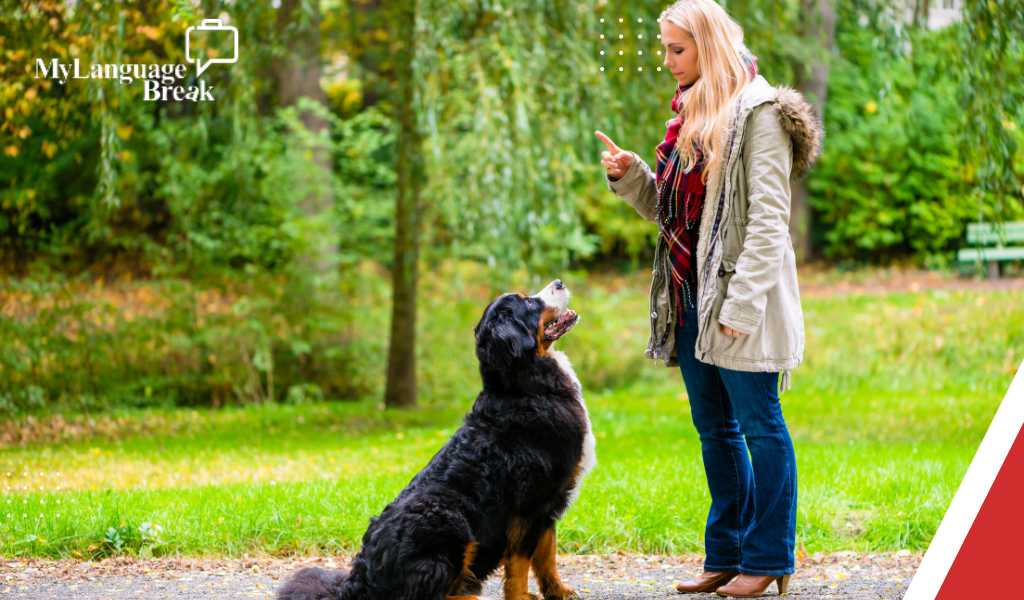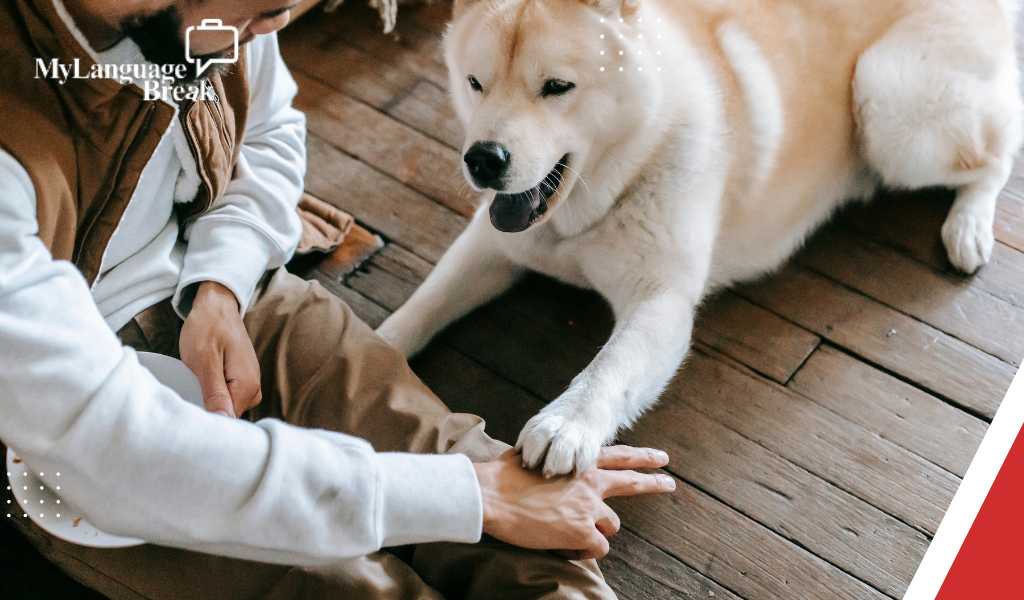Have you ever wondered why law enforcement and canine instructors utilize German for their pup’s training? Well, the reasons are plentiful.
In this article, we’ll discuss why German is so powerful for teaching dogs commands, how it can help eliminate any misunderstandings or selective hearing tendencies from your pet, plus several of the more popular German dog commands.
German Commands: The Easier Way to Train Your Dog
You can make training your pup a much simpler process by using German commands. Whether you’re teaching them essential obedience or more sophisticated orders, having some German terminology in your toolkit will assist the procedure significantly. Commands like those used for Schutzhund, tracking, and protection are all taught in Germany so why not use their language to simplify things? With these trusty words at hand, training your pooch doesn’t have to be such an arduous task anymore!
Get started training your pup with the most common German words such as “Sitz” (sit), “Bleib” (stay), “Aus” (let go) and “Bring” (fetch). Plus, teach them more specific commands like “Hopp” (jump), “Gib Laut”(speak) and ”Lauf’'(go)! With many other helpful phrases to choose from, you can easily instruct your furry friend in no time.
By speaking a few German phrases, you can make training your pup much simpler. For instance, use the word “Nein” to deter naughty behavior or say “Finden” while teaching them how to locate something. With consistent practice and dedication on both of your parts, they’ll learn these commands quickly in no time! Not just will it aid in making the process smoother but also give you an opportunity to create a stronger connection with your furry friend – so why not? Give it a try today and see the difference!
German Commands for Dogs
Strengthen your relationship with furry companion by teaching them German commands! From the basics of “sit” and “stay” to more sophisticated phrases such as “bring” and “fuss”, learning these words can help boost their skillset. Popular German dog commands include “Sitz” (sit), “Platz” (down), “Bleib” (stay) ,and “Hier”(come here). Additionally, if you’re looking for additional useful expressions try out some others like: Aus, Fass, Lauf! These are great tools that will come in handy when training your pup.
For those wishing to take their pup’s training further, commands like “Beruhigen” (settle down) or “Zurückweichen” (back up) in German can be taught. Regardless of the level of proficiency desired, teaching your pooch German commands is a great way to grow closer together. With sufficient practice and patience, they will soon comprehend all primary orders effortlessly!

Dogs Can Recognize Different Languages
It’s truly incredible to comprehend that our beloved canine friends can recognize us, regardless of the language we use! Recent research has demonstrated that dogs have an aptitude for different languages and are capable of discerning between familiar and unfamiliar ones. A team from Eötvös Loránd University in Budapest, Hungary recently conducted a study with 18 participants to examine their ability to differentiate between spoken languages. The findings were astonishing – each dog was able to accurately identify the various words by listening intently.
The findings demonstrated that the dogs had a thorough understanding of Spanish, Hungarian, and incongruous words. Additionally, brain imaging revealed distinct neurological reactions in the four-legged creatures when familiar versus unfamiliar languages were presented. This demonstrates not only can man’s best friend identify various dialects but also comprehend spoken language apart from gibberish.
Believe it or not, our furry friends have an extraordinary ability: the capability to decipher auditory patterns in human speech – a skill that no other animal has mastered! It’s simply incredible how intelligent these beloved four-legged companions are. Not only do they serve as devoted companions and best friends, but they can also understand us when we converse in foreign languages. Who knows what else these remarkable creatures are able to achieve?
Using Dog Treats in Training: How to Make Them Effective
Training your four-legged friend can be a truly enjoyable experience for the both of you, but in order to make it successful, you need to pick an appropriate reward. Dog treats are essential when teaching new skills and reinforcing good habits as they will provide incentives for them to learn quickly! But with various types available on the market today, how do you choose which one is most suitable?
To succeed in training your pup, it’s essential to find treats they enjoy and will work hard for. Aim for something with a strong aroma that is moist or freeze-dried, as well as something not typically given outside of these sessions. Soft dog treats are also preferable because they can be quickly consumed during short practice periods; biscuits may suffice if you’re doing one-off rewards but look elsewhere if regularly used. Ultimately, the best treat should have enough texture yet won’t break into pieces too easily.

As you search for the perfect dog training treats, take a look at what each product contains. Natural ingredients such as real meat or fish, along with fruits and vegetables like apples or sweet potatoes are beneficial. Conversely, artificial colors, flavors, preservatives and fillers like corn syrup or wheat gluten can create digestive problems in some dogs – steer clear of these.
No matter which type of treat you pick, remember that consistency is essential for effective dog training! Always have a selection of different kinds of treats ready so you can reward your puppy with something special every now and then, but still stick to the same general type of treat during their education.
With the right approach, dog treats can be an excellent tool for training your furry friend while also offering them a deliciously satisfying reward! There are so many options available nowadays, making it easy to find something perfect for every pup – just make sure you carefully read all labels before buying anything!
German Commands Make Dog Training Easier
Training your pup doesn’t have to be a grueling or lengthy process. Instead, German commands can help make the task much easier and more efficient! With minimal effort, you will quickly be able to learn some of the most common words in this language that are used when training dogs: “Sitz” (sit), “Platz” (down), “Steh” (stand) and “Bleib” (stay). Utilizing these phrases will offer an easy way for you to form a better connection with your furry friend.
To train your pup to obey, these commands are simple yet efficient. Apart from the usual ones, other German commands such as “Bring” (fetch), “Hier/Komm”(come here) and “Fuss” (heel) can also be used to help refine their learning experience. Don’t forget that when you use German words for teaching, consistency is integral!

Positive reinforcement is key when teaching your pup new skills; this way, they’ll learn what you’re asking of them and training will become a much more straightforward process in the end. To make it even easier for both owner and dog alike, why not incorporate German commands into your daily routine? By doing so, you’ll be able to effortlessly communicate with your four-legged friend.
Conclusion
Unleashing the full potential of your pup is a gratifying and stimulating experience. By utilizing German commands in conjunction with high-value treats as rewards during training sessions, you can ease up on the process while also guaranteeing that your canine friend remains motivated to acquire new skills! Ultimately, through persistent practice and an open mind from both sides, dog training can be a fun journey for one another where great improvements are made along the way.

